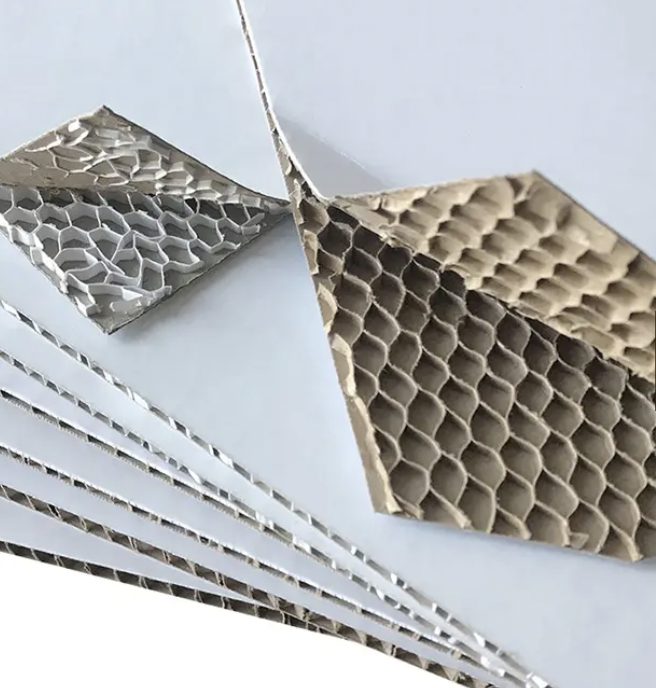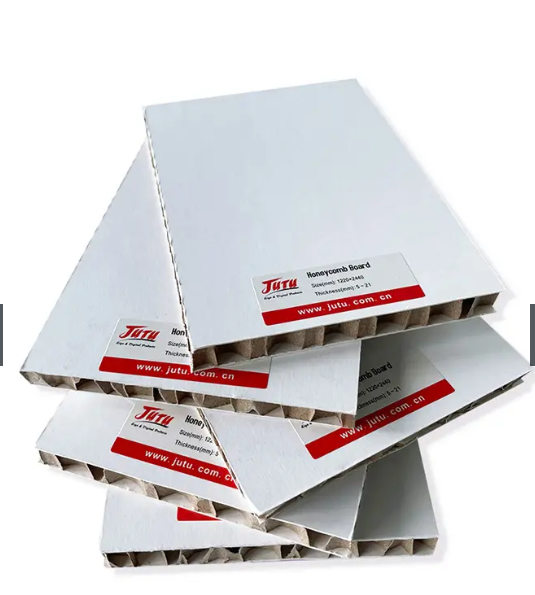What is Honeycomb Board Furniture? The Strength of Paper Meets Modern Design
The Science Behind Hexagonal Structural Integrity
Furniture made from honeycomb boards takes advantage of those little hexagon shapes inside to spread out weight really well, which makes it super durable and stable. When looking at how these boards work, the hexagonal cells actually help spread the load all over the surface instead of letting one spot take all the pressure, so there's less chance of warping or breaking down over time. Research has shown that compared to regular solid materials, honeycomb structures offer way better strength while weighing much less. Take Larcore aluminum honeycomb panels for instance they're used everywhere from airplanes to boats where things need to be both strong and not too heavy. Designers love working with this material because they can make furniture that doesn't weigh a ton but still holds up great, something we see more and more in contemporary living spaces today.
Material Composition: Paper Core Meets Protective Layers
Honeycomb board furniture is made with something pretty clever inside - basically just lots of paper arranged in a honeycomb pattern, then wrapped up in different protective layers. What makes this stuff green? Well, the paper core comes from recycled materials mostly, which helps cut down on waste. The outer layers aren't just there for looks either. Manufacturers typically slap on some kind of water resistant coating or laminate to keep things looking good longer. Some big name brands actually publish test results showing how long these materials last under normal conditions. Most people find that despite being so light, this type of furniture holds up surprisingly well over time. For folks who care about going green but still want something that won't fall apart after a few months, honeycomb boards seem to hit that sweet spot between environmental responsibility and actual durability.
Debunking Myths About Paper-Based Durability
People tend to think paper products aren't strong enough for serious use, but honeycomb board furniture tells another story. The truth is, these boards pack quite a punch when it comes to strength and lasting power. Industry experts back this up all the time, especially after seeing how well they hold up in real world situations. Take trade shows for example where exhibitors need something both lightweight and tough. Honeycomb cores work wonders there because they don't bend easily under pressure. Look at what customers actually say too many report years of service from their honeycomb furniture without any major issues. So next time someone questions if paper can be durable, just point them toward all those trade show displays standing tall week after week. These boards prove paper doesn't have to mean weak anymore.
Luxury Redefined: Aesthetic Possibilities of Honeycomb Furniture
High-End Finishes Mimicking Wood, Stone, and Metal
Honeycomb furniture comes with all sorts of fancy finishes that look just like expensive stuff like wood, stone or even metal. What's cool is these fancy coatings don't take away from what makes honeycomb so great in the first place its light weight. People love being able to get those upscale appearances without dealing with heavy furniture or breaking the bank. Some really creative designs actually won awards for how well they copied real materials while still keeping that practical side we need in our homes.
Seamless Integration in Contemporary Interior Styles
Honeycomb furniture fits right in with most modern interior styles these days, especially minimalist and industrial looks. The stuff is surprisingly light but still sturdy, plus comes in all sorts of finishes from matte black to warm wood tones. That's why so many homeowners pick it when they want something stylish yet practical for their living spaces. We've seen some great examples of honeycomb pieces working wonders in high profile design projects too. They really adapt well across different styles without looking out of place. Most interior designers I talk to love how flexible these pieces are. One decorator told me recently that honeycomb furniture can completely change the vibe of a room while still serving real functional purposes that match what people need in today's homes.
Customizable Designs for Bespoke Luxury
Honeycomb furniture stands out because it can be customized to fit what each customer wants and needs, creating something really special and luxurious. More people these days are looking for furniture that feels personal rather than mass produced, and honeycomb structures just happen to work well for this kind of customization. We've seen all sorts of custom jobs where designers used honeycomb patterns to create pieces that look great while solving specific problems too. The ability to tweak these designs isn't just about making things pretty though it actually addresses how the furniture market is changing as consumers want more unique options instead of cookie cutter solutions.

Engineering Advantages: Why Honeycomb Outperforms Traditional Materials
Weight-to-Strength Ratio: Lighter Than Solid Wood
What really sets honeycomb board furniture apart is how it balances weight against strength, giving it a clear edge compared to regular solid wood pieces. The secret lies in the core material used inside these boards. Manufacturers create this core using materials that stay light while still holding up well under pressure. Think about it this way: these boards look just as good and last almost as long as traditional wood furniture, but they weigh so much less. Paper honeycomb cores and those made from ThermHex polypropylene have become favorites in the industry because they pack a lot of strength without adding bulk. And let's face it, nobody wants to wrestle with heavy furniture when moving or setting things up. Lighter pieces mean less strain on workers during installation and lower shipping costs too, which saves money all around for everyone involved.
Impact Resistance and Long-Term Stability
Honeycomb board furniture stands out when it comes to handling impacts and staying stable over years of use, something regular furniture just cant match. The way these panels are built lets them soak up shocks and handle all sorts of daily bumps and scrapes without showing damage. People who own honeycomb furniture often mention how long it lasts. One recent study found that owners were much happier with their honeycomb pieces than those made from standard materials. These boards meet most durability requirements set by manufacturers, so they hold up under normal conditions and keep going for many more years after that. What really matters is that this extra stability means less frequent replacement, saving money in the long run while keeping homes looking good for decades.
Moisture Resistance and Climate Adaptability
Honeycomb furniture really stands out when it comes to resisting moisture and adapting to different climates, so it works great in all sorts of places. Regular wood tends to warp or break down when exposed to damp conditions, but honeycomb materials handle themselves much better in varying humidity and temperatures. The thing about these materials, especially ones made with aluminum honeycomb cores, is they just don't soak up water like other stuff does. That means honeycomb pieces stay strong and look good even after being subjected to different weather conditions, something regular materials often struggle with. For anyone dealing with spaces where the climate changes a lot throughout the year, honeycomb furniture offers real advantages without compromising on appearance or durability.
Sustainable Luxury: Environmental Benefits of Honeycomb Furniture
Recyclable Paper Core vs. Plastic Composite Alternatives
The environmental advantages of honeycomb furniture come mainly from its paper core that can be recycled again and again. Plastic alternatives just don't stack up when it comes to going green since most people struggle to actually recycle those materials properly. Studies show around 75% of honeycomb pieces end up getting recycled versus only about 9% for standard plastic items. What makes this even better is that many manufacturers now display official green certifications right on product labels. Green building experts have been talking about how switching to paper cores represents real progress for reducing waste in manufacturing. Take Think Lightweight as an example they recently earned their third EcoVadis award after implementing several new recycling programs across their production facilities last year.
Reduced Carbon Footprint in Production and Shipping
Honeycomb furniture leaves a much smaller carbon footprint during both production and shipping when compared with regular furniture materials. The honeycomb structure itself takes far less energy to make because it's so light and doesn't need complex assembly steps. Industry data shows that factories produce way fewer emissions since they're using so little material overall. And because these pieces weigh so little, moving them around takes less fuel too, which cuts down on carbon emissions during transport. Big names in the honeycomb furniture business are actually setting pretty bold green targets right now. Companies like EcoFurnish and GreenChairCo are leading the charge toward greener manufacturing methods. They want to protect our planet without sacrificing quality, something customers seem to appreciate more than ever these days.
Circular Design Potential in High-End Interiors
Circular design is really taking off in the world of furniture, and honeycomb structures are leading the charge when it comes to making manufacturing more efficient with resources. Basically, what we're talking about here are designs that keep materials moving through production cycles rather than ending up as waste after one use. Luxury interiors have started picking up on this trend quite a bit lately. Think high end hotels and boutique offices where clients want both style and sustainability. Some top notch interior designers like Sarah Richardson and Kelly Wearstler have incorporated these concepts into their work, proving that green doesn't mean boring. The design community is buzzing about how honeycomb furniture fits into broader circular economy models. There's definitely something special about watching architects and decorators gradually shift toward these principles, which explains why we see more and more of these innovative pieces showing up in premium spaces across the country.

